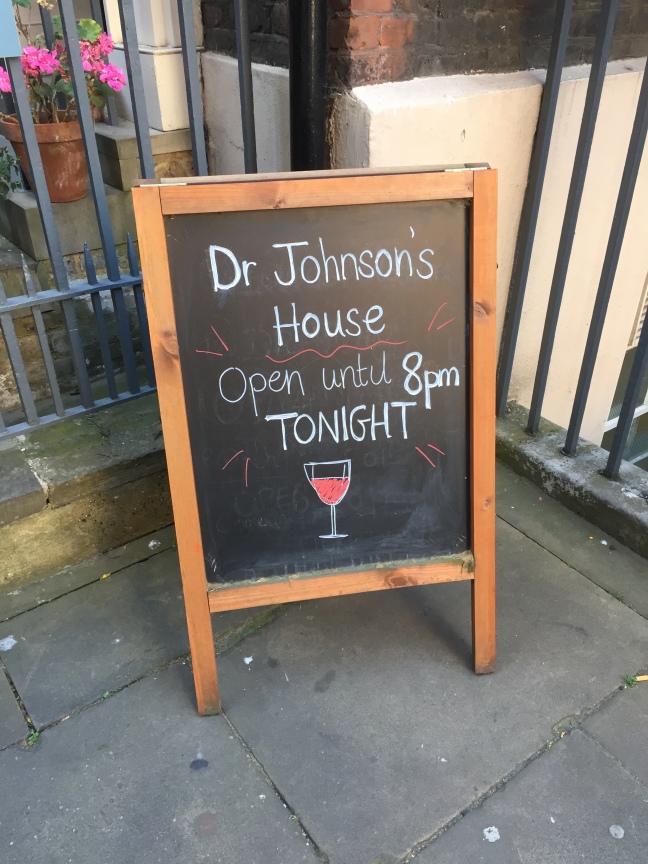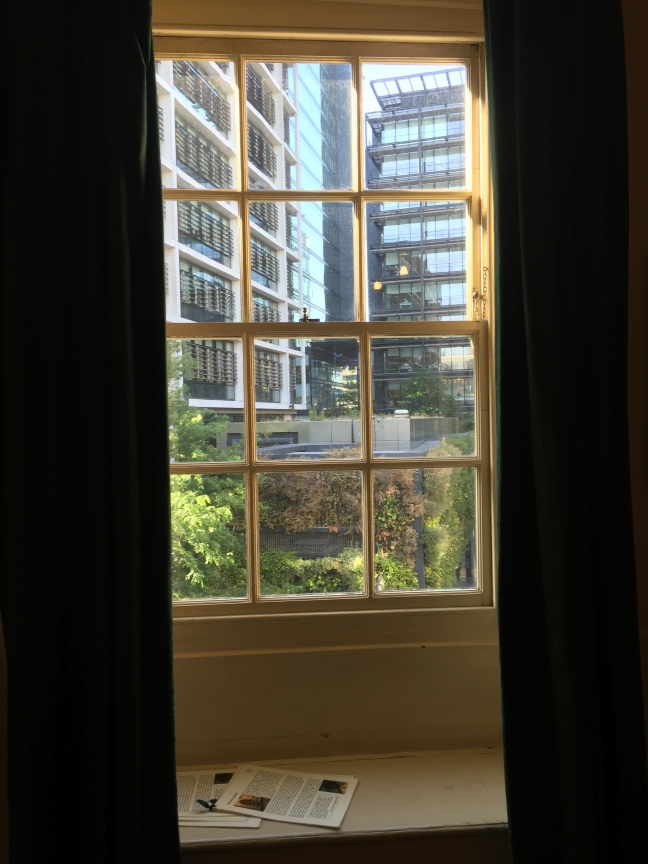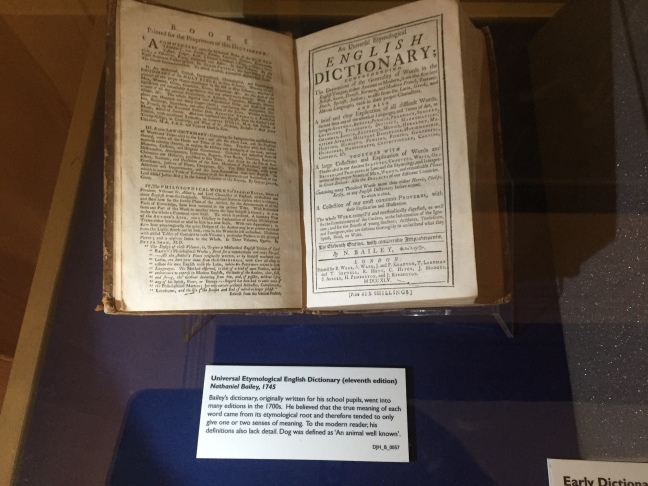Thursday, July 9, 2015
Samuel Johnson keeps popping up in my life… and I’m okay with that fact.

I got that chance to visit one of Samuel Johnson’s houses in London after hours… aaaand have a glass of wine. It was a special event.


The building is located at 17 Gough Square, just behind the infamous Fleet Street. It’s a four story townhouse that’s been magnificently restored by Cecil and Emilie Harmsworth for public enjoyment!

It’s a quiet retreat nestled amongst the tall, modern, business buildings of London.

The house has many artefacts on display and every level of the house is open to the public. Personally, I loved the library area which was most likely Dr. Johnson’s bedroom.

The library is open to public users! It includes many books and pamphlets related to the work of Dr. Johnson including modern editions. There are several first editions of Johnson’s Dictionary (eep!) as well as manuscripts owned by James Boswell. They even have an online cataloge! I spoke with the curator for a few minutes in order to ask a couple of questions (and get my glass of wine) and was happily surprised to find out that researchers can use the materials by appointment! Visit their website to find out more information. It’s a great house and I wish the best for those taking care of it…
They have materials displayed that Johnson most likely referenced in writing his Dictionary:


Seriously. Visit this library…
I even got to check out a facsimile of Johnson’s A Dictionary of the English Language. You might even say I had fun doing so… 🙂 Here are some of my favorite entries:





Other favorites are “BARD – A poet” and “LEXICOGRAPHER – A writer of dictionaries; a harmless drudge, that busies himself in tracing the original and detailing the signification of words.” He was a man that had a sense of humor… obviously.
Samuel Johnson popped up in my life at the beginning of college, when I accidentally signed up for “Late 18th Century English Literature” class thinking it would be about the 1800s. Nice move, Kelsey. There, instead of reading Jane Austen like I imagined, we read The Castle of Otranto by Horace Walpole, The School for Scandal by Sheridan, The Vicar of Wakefield by Oliver Goldsmith, The Man of Feeling by Henry Mackenzie, The Life and Opinions of Tristram Shandy, Gentleman by Laurence Sterne, and several great essays by Samuel Johnson and James Boswell. This began my awareness of Dr. Johnson. More recently I read The Professor and The Madman by Simon Winchester about the making of the Oxford English Dictionary; again, Samuel Johnson was brought up for his work with the dictionary (which he largely compiled in THIS house). He’s an amazing figure in the history of English Literature and I hope you get to learn more about him!
Once more, go check out Dr Johnson’s House homepage and support their wonderful efforts! You can donate money, sponsor a print for conservation work, purchase something from their shop, or use their collection materials!
-Other links-
Dr. Johnson’s House homepage
Dr Johnson’s House on Facebook
Dr Johnson’s House on Twitter (@drjohnsonshouse)
